Shortly after German Economy Minister Robert Habeck, Transport Minister Volker Wissing also visited China a few days ago. He signed a Memorandum of Understanding on the data transfer dialogue. In an interview with Felix Lee, Wissing defended himself against public criticism of the agreement. He said it contained “no concrete agreement on how the data transfer will be handled.” Wissing stressed the importance of dialogue, even in complicated relationships. He rejects the planned EU special tariffs for imported electric cars from China: “Tariffs are not in the interests of our citizens. Because they ultimately have to pay the tariffs.”
The EU tariffs will theoretically come into force on Thursday, initially until November. China and the EU Commission have started talks at short notice to sound out whether an agreement can be reached after all. Details of these talks have not yet emerged. So, whether the tariffs will come into force as planned remains to be seen. In any case, there will be supporters and opponents of the measure until the very end.
Our feature is also about mobility-about China’s traditionally underdeveloped used car market. Until now, anyone looking for a pre-owned car often had a limited selection. However, business has recently picked up, writes Christian Domke Seidel. A package of regulations that Beijing enacted in 2022 also played a part in this.

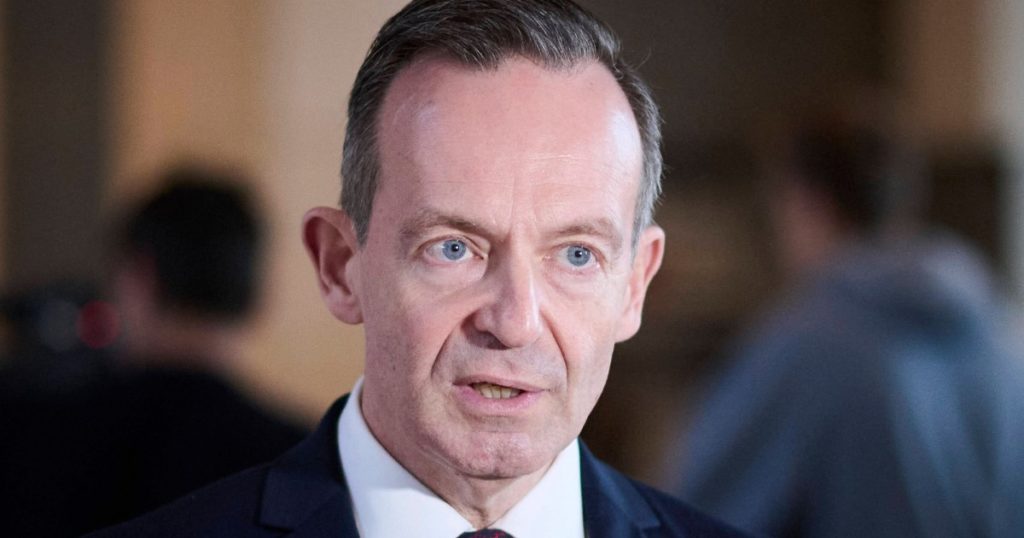
The tariff dispute, China’s support for Putin, the aggressive geopolitics around Taiwan and in the South China Sea – Sino-German relations are not at their best. What were you able to achieve on your trip to China last week?
Politicians in positions of responsibility cannot simply say things are difficult; they have to find solutions, and solutions lie in dialogue. This is also in line with the German government’s China strategy. I think it makes a lot of sense that we do not allow fragmented markets, especially in these times when many things are changing disruptively. We need global, open markets that avoid unnecessary costs. We must simplify things where we can. Digitalization virtually requires us to adapt to international rules.
The Memorandum of Understanding on data transfer you signed with the Chinese side has caused anger in the German government coalition – apparently even with the Chancellor.
No, I didn’t perceive that as criticism from the Chancellor. He has been misinterpreted. This Memorandum of Understanding follows a declaration of intent with China on autonomous driving, which was signed during the Chancellor’s last trip to China in April at his request. I have not heard any criticism from the Green Party either. The subject of the current MoU is the agreement to enter into a joint dialogue on legal issues relating to cross-border data exchange. This does not yet include a firm agreement on how the data transfer will be structured.
Last year, the German government adopted the China strategy, which envisages a uniform China policy. That doesn’t seem to be working.
Dialogues between the relevant ministries on both sides are in line with the China strategy. We have been in continuous dialogue with the ministries and informed them at an early stage about my trip to China and my associated intentions. The internal government consultations on the data traffic MoU began immediately after the Sino-German government consultations and the signing of the declaration of intent on autonomous driving in April. The first draft of the MoU was presented in mid-May. German companies rightly expect that data exchange with China will also remain possible in the future. A dialogue channel with the Chinese side is also important because companies would otherwise face legal uncertainty.
The Green Party criticizes that you stepped out of line – for example when it came to the EU’s plans to impose car tariffs on Chinese EV imports.
Yes, I did call these tariffs destructive. Constructive is when you eliminate distortions of competition. It is destructive when additional trade barriers are erected. And that’s why I advocated a constructive approach, which can only be based on dialogue. We must first identify what distortions of competition exist and how they can be eliminated. Tariffs are not in the interests of our citizens. After all, they ultimately have to pay the tariffs. Not only are Chinese cars produced in China, but German cars will also be subject to tariffs.
In your opinion, how should China be dealt with appropriately if its government massively subsidizes its domestic companies, creates huge over-capacities, and is now dumping them on Europe?
Germany thrives on internationally open markets that operate on a fair and level playing field. Our automotive industry is highly competitive, which is why we are so successful. China’s industrial policy is not our responsibility.
But China does not play fair.
Then you have to talk about these problems and look at where competition can be improved.
We have already seen in the solar industry what it means if Europe does nothing about China’s overcapacity. Today, Germany sources 90 percent of its solar systems from the People’s Republic. The European solar industry has virtually ceased to exist. A similar development in the automotive industry would be even more devastating.
The German government is committed to fair conditions and opposes unfair ones. That is the principle. We want a level playing field in competition. However, we do not want to restrict competition through tariffs and trade barriers.
The EU Commission has realized that empty threats against China are not helpful. Instead, concrete measures are necessary to gain any negotiating leverage. German Economy Minister Habeck, who was in Beijing a few hours before you, picked up on this approach. The Chinese side was immediately willing to negotiate.
I have already expressed my opinion on this beforehand. I believe that problems should be resolved through dialogue and not through threats. An electric car is much easier to produce than a combustion engine. The entry barriers are lower. That’s why there are now so many manufacturers in China. Car production is now open to many more people around the world. For Germany, it is a matter of course that we do not fight such changes, but that we face up to this intensified competition. The problem with electromobility in Germany is that prices are too high and availability is too low. The average entry-level price for an electric car in Germany is over 40,000 euros. Tariffs are not the solution; the question should be: How can we make these cars affordable for everyone? My answer: Preferably with a market economy and a lot of competition.
So the problem is with the German car manufacturers.
The German car manufacturers know where the problem lies. I am very confident that the German automotive industry will survive this global competition. I have faith in that. What I also found interesting about the trip. Nobody in China says that they are only focussing on electromobility. Many people I spoke with predicted a market share of 40 percent for electromobility and 30 percent for hydrogen drives and combustion engines, respectively. Here in Germany, people like to claim that China is focusing 100 percent on electric vehicles.
Keyword: de-risking. Your party colleagues Christian Lindner and Bettina Stark-Watzinger also want to reduce dependencies on China. You obviously see it differently.
I see no difference between Mr. Lindner’s and my positions on how we deal with China.
What is your definition of de-risking?
Since the pandemic, we have certainly become more vigilant regarding matters of sovereignty and supply chains. We were all shocked at how suddenly open markets were no longer open at all because they were politically closed. And, of course, you have to make sure you diversify with large trading partners.
Germany’s car manufacturers do not understand de-risking as less business in China but as localization. In other words, they are focusing on China even more. This also explains why VW is investing billions more in China while cutting jobs in Germany.
Of course, we always monitor the job situation closely. But we do not intervene in companies or control their foreign investments. We must ensure that politicians don’t think they are better at managing a company’s risk than the companies themselves.
Volker Wissing (FDP) has been Federal Minister for Digital Affairs and Transport since 2021.
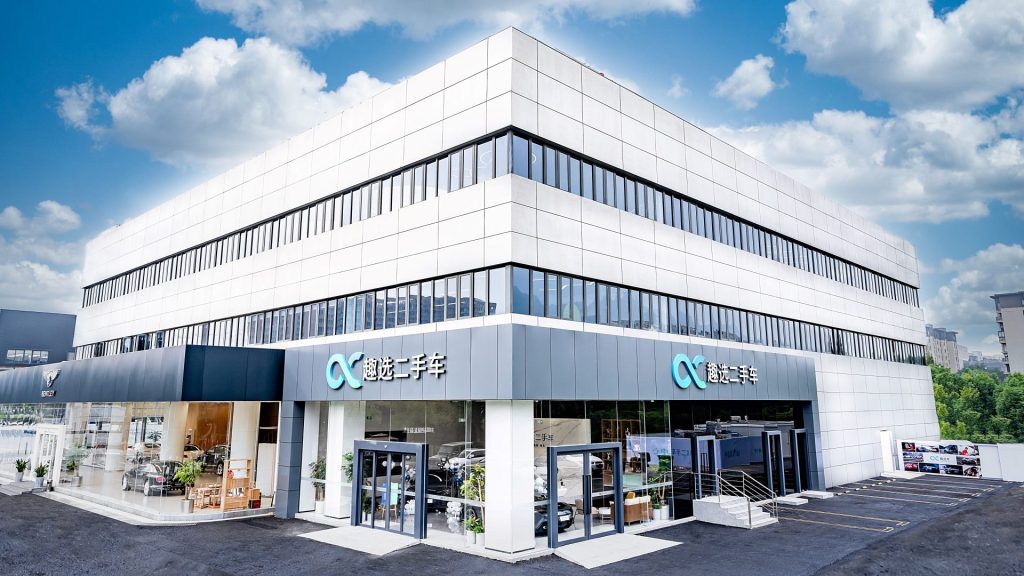
In 2014, around six million used cars were sold in China; by 2023, it was already 18.4 million – a record. And the boom is likely to continue this year, too. This is also partly due to the Chinese government drastically liberalizing the used car trade in 2022. It significantly simplified complex taxes, abolished bureaucratic hurdles and dropped trade restrictions.
Kerstin Nemeth is CEO of Porsche Automotive Investment GmbH, a Porsche Holdings trading company. She was pleased to report a 15 percent year-on-year growth in April 2024. Nemeth has been active in China since 2012. Its parent company, Porsche Holding from Salzburg, is, to put it simply, the largest car dealership in the world – with 34,900 employees in 29 countries and an annual revenue of 25.8 billion euros. Nemeth comments on the major reform of 2022 as follows: “The Chinese government is very practice-orientated and supports companies. The bottleneck for used cars has been recognized and eliminated. Some issues just take a little longer to implement. In this case, it wasn’t a priority because the focus had been on the new car business for a long time.”
The Communist Party adopted a whole package of measures at the time:
The fact that these changes were necessary also had to do with the growing individual mobility in the country. Supply and demand have increasingly converged in recent years. “Conditions are changing rapidly in China. Supply and demand are no longer as far apart as they used to be when every new Porsche would have had tens of thousands of buyers. The new car market is now more competitive and the used car market is not completely decoupled from it,” says Nemeth.
In fact, the situation has completely changed. The car industry in the People’s Republic is struggling with overcapacity and a price war. This is forcing dealers to change their business model. “Most dealers used to neglect the used car market because they didn’t see the potential and, secondly, the growth meant they could only generate enough profit with new cars.”
In China, only the state-regulated used car markets used to be relevant. These are shopping centers for used cars where dozens of smaller dealers sell up to 100,000 vehicles yearly. Chinese car dealers were not interested in the business. Things are different in the West. European and American dealers generate around 55 percent of their revenue with new cars and 17 percent with used cars; the rest is after-sales – i.e., service and repairs. In China, the share of new vehicles is 84 percent and the share of used cars is only four percent.
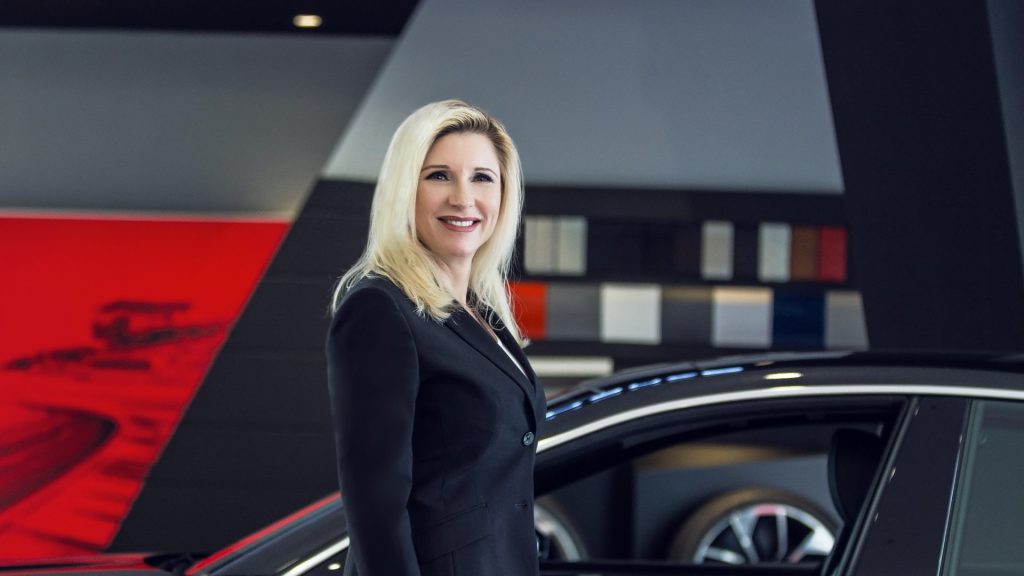
Porsche Automotive Investment GmbH now operates 50 dealerships in China and has tried to avoid this imbalance in its balance sheet from the outset. “We’ve been in China since 2004 and have been applying our European retail expertise in China right from the start,” explains Nemeth. Porsche has been working with used cars in China from the start – “even though the business here is completely different to the one we know from Europe.”
Nemeth does not believe that used cars will cannibalize the new car market in the foreseeable future. The average number of vehicles per 1,000 inhabitants in China is around 200, albeit with significant regional differences. In Europe, the figure is 550, and in the USA, even 700. The market in the People’s Republic will catch up in the coming years and continue to grow until 2030.
However, precise planning is difficult because it is still unclear what impact electric cars will have. They are just starting to enter the used car market in large numbers, and that presents some challenges. New electric vehicles, which cost up to 100,000 yuan, lose around a third of their value within the first year, while gasoline-powered vehicles only lose a quarter within the first three years.
This enormous difference is mainly because the value of an electric car depends heavily on its battery. And the progress of development here has been tremendous. Five years ago, a battery with a range of up to 200 kilometers was state-of-the-art technology. Today, it would no longer be competitive in any segment. In addition, the speed of software development is immense. The price will certainly be higher if new versions can be installed on a car. However, this also depends on whether the computing power in the respective cars is high enough.
Moreover, EV subsidies have fluctuated considerably in recent years. Some cars now on the used car market have benefited from enormous subsidies, others hardly at all. Due to these differences, the actual market value is de facto unknown.
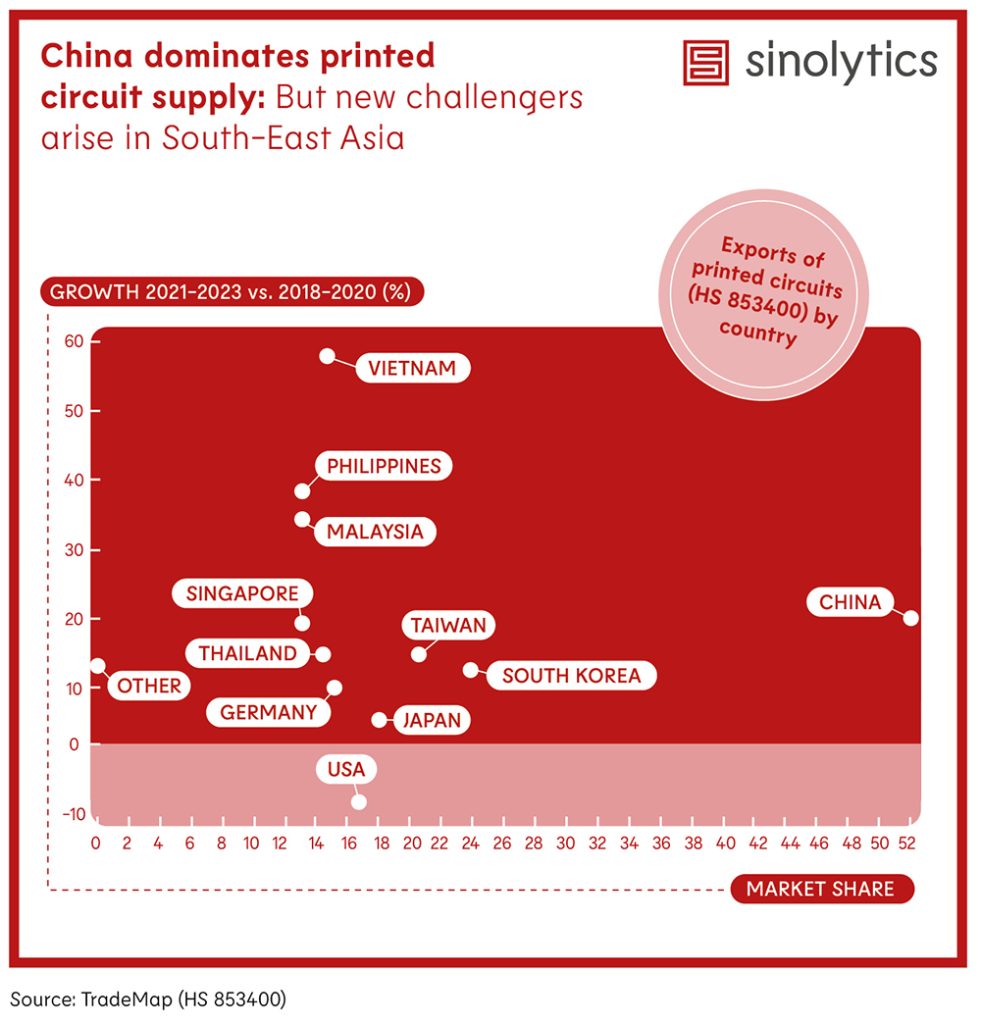
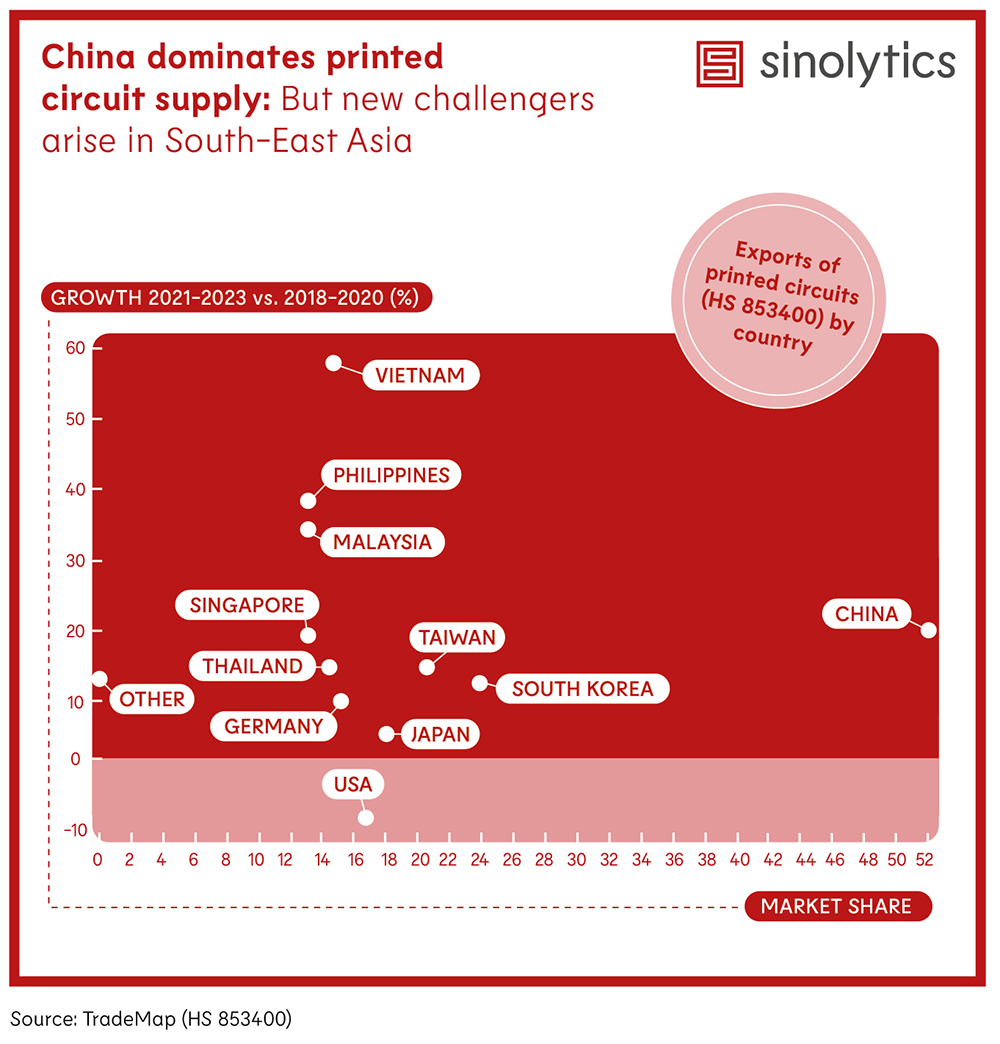
Sinolytics is a research-based business consultancy entirely focused on China. It advises European companies on their strategic orientation and specific business activities in the People’s Republic.
According to estimates by management consultancy AlixPartners, Chinese car brands will gain a third of the global market by 2030. According to the consultancy firm’s “Global Automotive Outlook” study published on Tuesday, they will then sell around nine million vehicles outside of China: “The doubled market share of Chinese brands in Europe between 2024 and 2030 would come at the expense of European, Japanese and Korean brands, whose sales volumes would remain stable at best.”
According to forecasts by AlixPartners, the share of new electric cars in Europe will rise to 45 percent by 2030 -up from around 20 percent this year. Chinese brands are currently pushing into the EU market, especially electric cars. As AFP reported, their share of the European EV market was 7.8 percent in the fourth quarter of 2023, citing the analysis company Jato Dynamics.
According to AlixPartners, Chinese car manufacturers have a structural cost advantage: Compared to a European electric car, manufacturing costs in China are around 35 percent lower, mainly due to lower battery production costs. But that’s not all: “In addition to the fast development cycles of around 18-24 months, Chinese car manufacturers are also one step ahead of the global competition when it comes to customer focus.”
The consultants believe the EU’s punitive tariffs against imported EVs from China, which may come into force on Thursday, could “slow down imports from the People’s Republic in the short term and support sales prices.” However, “they will also accelerate the local production of Chinese vehicles and components in Europe,” says AlixPartners industry expert Fabian Piontek. “Chinese car manufacturers are increasingly setting industry standards and putting further pressure on the German automotive industry.” Piontek concludes: “The traditional operating model of the automotive industry in Germany must change if we want to remain competitive.” ck
A growing number of electronic listening stations in Cuba are suspected to be linked to China. This is indicated by satellite images analyzed by the Washington-based think tank Center for Strategic and International Studies (CSIS). The facilities include a building at a previously unknown location, around 113 kilometers from the US naval base in Guantánamo Bay. CSIS has compiled detailed information on four active sites in a new study.
Last year, the Wall Street Journal reported that China and Cuba had established closer defense and intelligence ties – including a new joint military training facility and a listening post – on the island. According to the WSJ, Cuba and China already operated joint listening posts in the Caribbean state at the time. The US government confirmed this.
Russian President Vladimir Putin and Chinese leader Xi Jinping will use today’s summit of the Shanghai Cooperation Organisation (SCO) for another personal bilateral meeting. According to Reuters, the Russian news agency TASS announced this on Tuesday. The SCO summit is being held in the Kazakh capital, Astana, until Thursday. Xi and Putin last met at their summit in Beijing in mid-May. Even then, Russian Foreign Minister Sergei Lavrov confirmed that they would speak to each other again in Astana.
Xi arrived in Astana for talks on Tuesday. Among other things, he wants to expand the strategic partnership between China and Kazakhstan further. Despite the international arrest warrant against him, traveling to Astana is not a risk for Putin. Kazakhstan is not a member state of the International Criminal Court in The Hague, which issued the arrest warrant in March 2023. The last time Putin visited Kazakhstan was in November 2023. His last trip had taken the Russian ruler to North Korea. The new close ties between Putin and North Korea’s dictator, Kim Jong-un, will most likely also be discussed at the meeting between the “good friends” Xi and Putin. ck
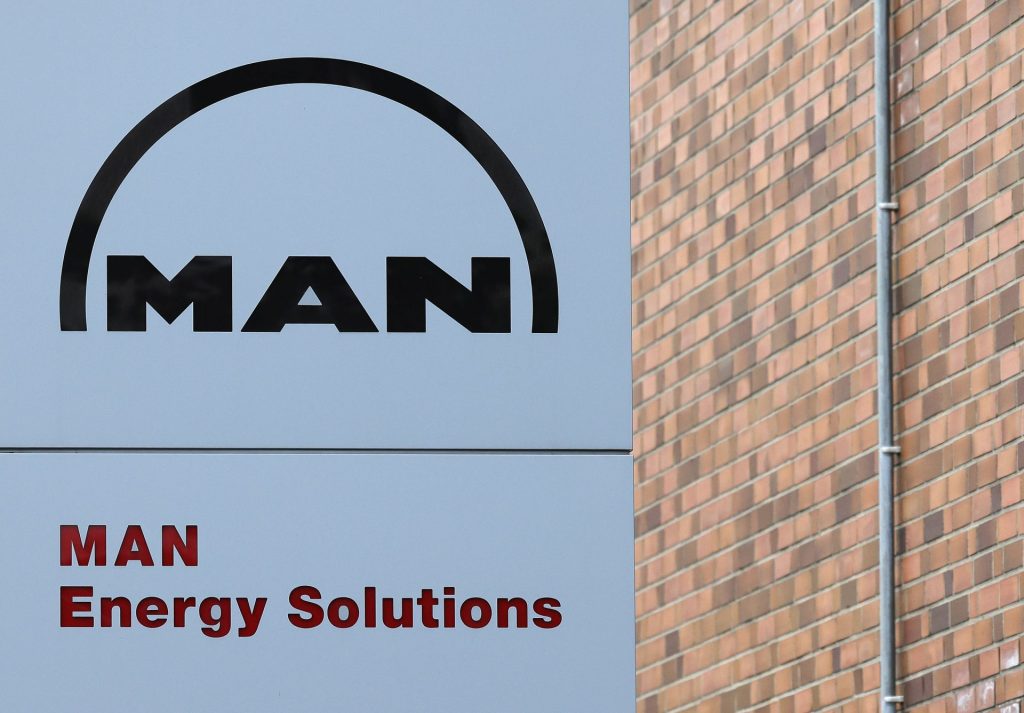
According to government circles, the sale of Volkswagen’s gas turbine business to China has failed because of a veto by the German government. The gas turbine division of MAN Energy Solutions cannot be sold to the Chinese CSIC Longjiang GH Gas Turbine Co (GHGT) under the Foreign Trade and Payments Act because its parent company, the shipyard group China State Shipbuilding Corp (CSSC), is too close to the country’s military. The cabinet will make a decision to this effect on Wednesday, government representatives told Reuters on Tuesday.
With a workforce of 100 employees in Oberhausen and Zurich, the MAN Energy division manufactures and maintains gas turbines used to generate energy or power pipelines – and potentially for warships. The Volkswagen subsidiary, which, according to insiders, doubted such a use, announced that it would accept the decision as soon as it was available. According to company sources, the development of new gas turbines will then be discontinued, while profitable maintenance is to be retained. Volkswagen had agreed to sell the small division to China just over a year ago. However, MAN Energy Solutions confirmed in September that the government was intensively scrutinizing the transaction. It is still unclear how many employees will be affected by the decision. rtr
By introducing new rules, China intends to reduce the oversupply of carbon emissions credits in its emissions trading system (ETS). The draft rules presented on Tuesday prohibit the customary “borrowing” of credits from the future. It also lays down stricter rules for transferring unused credits from previous years to the present, as Bloomberg reports. According to the responsible environment ministry, the new rules are intended to create a “slight shortage” of carbon certificates on the ETS market.
So far, free carbon credits have been allocated to participating power plants based on a complicated formula. Due to the current oversupply, emissions trading, which started in 2021, has practically no impact on the climate, as critics criticize. Once the planned supply shortage of credits comes into force, it will “send a strong signal to market participants,” Bloomberg quoted Yan Qin, an analyst at the London Stock Exchange Group, as saying. The Exchange estimates the oversupply in China’s ETS to be around 360 million tons of CO2.
The ministry also set new emissions targets for participants for 2023 and 2024. Participants must now report compliance with these targets once a year instead of every two years. In February, Beijing already tightened the fines for participants who manipulate their emissions reports. Currently, 2,257 companies from the energy sector – mainly coal-fired power plants – have to participate in the ETS. An expansion to other sectors is planned; in March, preparations were announced for the inclusion of the aluminum industry, which is expected to take place in 2025.
Meanwhile, a Reuters report on Tuesday revealed that China continues to hold on to fossil fuels alongside the development of renewable capacities: China founded an organization that unites national oil producers and other state-owned companies to explore very deep oil and gas deposits and exploit hard-to-extract non-conventional resources. ck
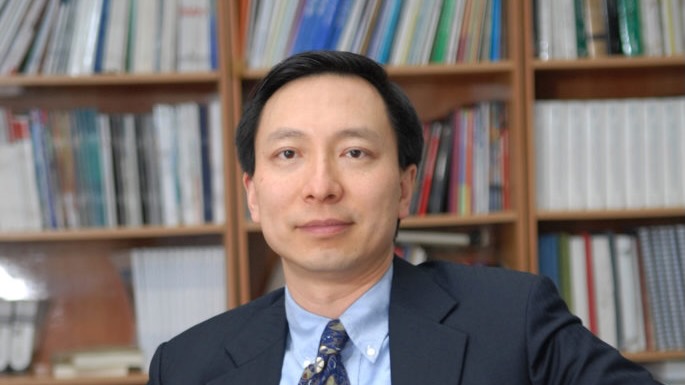
On June 12, the European Union announced new provisional levies on Chinese electric vehicles (EVs), with the tariff level to be based on estimates of how much state support an EV exporter receives. The new tariffs follow from a months-long investigation into China’s use of financial subsidies, and they will be imposed on top of the 10 percent tariff that the EU already has in place. They are “provisional” because they might be revised downward if Chinese producers can offer evidence that the support they receive is less than estimated. Separately, if the EU can reach an agreement with China to reduce the volume of Chinese EV exports to Europe, the new tariffs may not be implemented.
The new tariffs reflect the EU’s upper-bound estimate of the total subsidy per vehicle that Chinese producers receive from all levels of government throughout their supply chains. The investigators sent requests for cooperation to all Chinese EV producers, and selected three from among those who complied: BYD, Geely, and SAIC. They then pored over those companies’ records and interviewed company insiders and industry experts.
Concluding that the rates of subsidies are 17.4 percent at BYD, 20 percent at Geely, and 38.1 percent at SAIC, the investigators set tariffs on each company accordingly. All other EV producers who agreed to cooperate with investigators will face a tariff of 21 percent (the weighted average of the three), while producers who have not pledged cooperation will be subject to a 38.1 percent tariff.
The EU’s findings provide insight into the true nature of the United States’ 100 percent “anti-subsidy” tariff on Chinese EVs. The US tariff, announced last month (with no serious investigation), is so much higher than any reasonable estimate of Chinese subsidies that its protectionist intent is obvious.
Even before President Joe Biden’s administration imposed the 100 percent levy on Chinese EVs, US tariffs on Chinese imports – erected under Donald Trump, but carried over by Biden – were already at levels similar to the infamous US Smoot-Hawley tariffs of the 1930s. In 2020, a World Trade Organization panel (consisting of experts from countries other than the US and China) ruled that these tariffs are inconsistent with US legal obligations at the WTO. But both the Trump and Biden administrations have chosen to ignore WTO rules.
Most governments have said nothing publicly about the US policy, partly because the tariffs have raised the relative competitiveness of their own products in the same market (by dint of reducing Chinese producers’ competitiveness). Following the Trump tariffs, direct US imports from China declined precipitously, while imports from Mexico, India, Vietnam, and many other countries increased.
Some commentators seem to believe that since China’s cost advantage is so large, a 30 percent tariff is not enough to curtail Chinese EV exports. But this assumption is mistaken for at least two reasons.
First, because different markets have different standards for safety and other matters, auto producers often must adjust car designs accordingly, and this reduces the number of sales per model in a given market. (For example, Chinese standards emphasize the safety of pedestrians and others outside a vehicle in the event of a collision, whereas the US standard emphasizes the safety of the driver and others inside the car.) Second, any given model needs to reach a certain threshold of sales volume to be profitable. Thus, any tariff that can reduce the expected quantity of sales sufficiently could remove the incentive for exporting to that foreign market altogether.
Some Chinese EV producers might consider locating production in the US, which could be good for US job creation and tax revenues. But since the US government review of inbound foreign investment is perceived to be anti-China by Chinese firms, many producers may simply give up on the US market entirely.
The primary victims of the US tariffs (besides Chinese exporters and American consumers) are producers from smaller countries that now face an elevated risk of larger countries imposing protectionist measures with seeming impunity.
As EVs are an important tool in the world’s transition to a net-zero economy, some subsidies are better than none. A globally efficient subsidy rate for EV production and consumption is higher in the absence of a sufficiently high global carbon tax. The EU and US probably prefer tariffs on foreign goods to subsidies on domestic EV production because both are already burdened by high levels of debt.
The new tariffs will certainly harm Chinese EV manufacturers’ prospects, in terms of both profits and jobs. But they are also bad for European and American households, because they will raise prices (domestic producers will face less competitive pressure) and delay the transition from highly polluting traditional automobiles.
At the same time, the new tariffs will create two opposing forces in the rest of the world. By shutting Chinese EVs out of the US and EU markets, they may drive an increase in Chinese exports elsewhere. That will benefit consumers in these countries, and ease their transition to cleaner transportation. Among countries with small domestic auto industries, such as Australia and New Zealand, there are no obvious losers. But for countries with a sizable auto industry, there will be even greater competitive pressure, and these governments may feel compelled to imitate the US and the EU.
The world would have been much better off if major powers had found a way to negotiate a common pro-climate subsidy scheme for EVs, and a common tax on carbon emissions. Instead, we may get a self-destructive race to the bottom.
Shang-Jin Wei, a former chief economist at the Asian Development Bank, is Professor of Finance and Economics at Columbia Business School and Columbia University’s School of International and Public Affairs.
Copyright: Project Syndicate, 2024.
www.project-syndicate.org
Timo Tianhao Herrmann has been Lead for EU Sales Planning & Distribution at the Geely Group’s EV subsidiary Zeekr since June. Herrmann previously worked for Porsche in China, among others. Most recently, he helped the EV manufacturer NIO to expand into Europe. He is now moving from Shanghai to Amsterdam.
Alex Boonen has been Key Account Manager Global Wholesale at China Unicom Europe since May. Boonen previously worked for the competitor China Telecom, among others. He will remain based in London.
Is something changing in your organization? Let us know at heads@table.media!
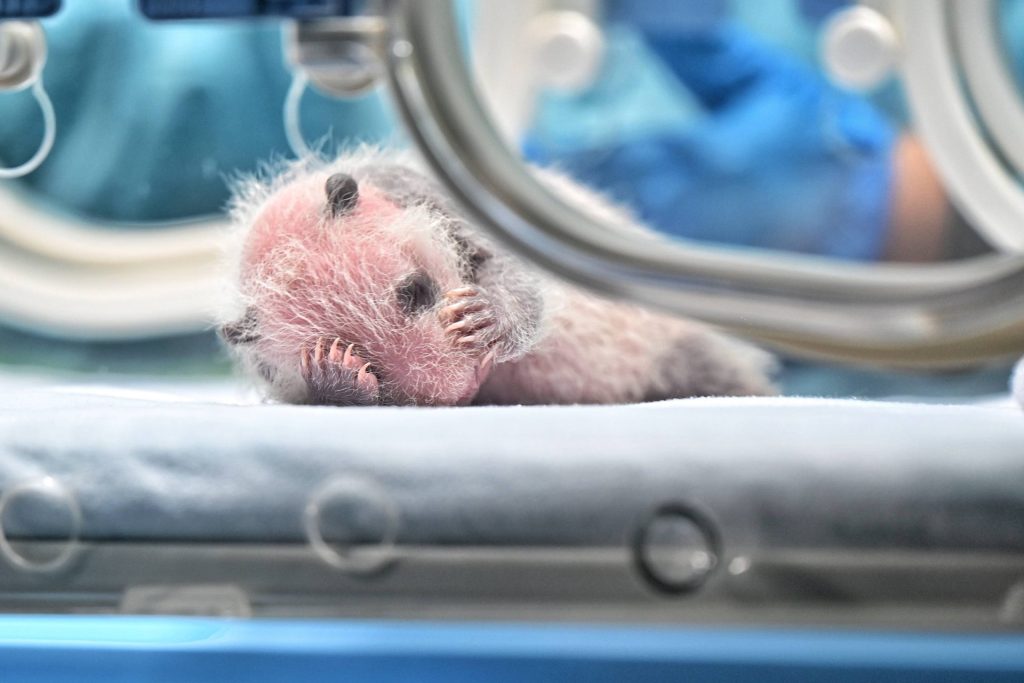
Two weeks ago, Meng Meng – the eldest of the only known surviving panda triplets in the world – gave birth to a healthy panda cub at Guangzhou Zoo. Born at 3.38 am on June 18, the healthy cub weighed 178 grams. On July 1, the baby’s pink skin started to turn white and her eyes, ears, shoulders, arms and legs began to turn black. So she already started to resemble a panda when she was presented to the public on Tuesday – in the incubator. Panda mothers only carry their babies for a few weeks and then give birth to them at an extremely early growth stage for mammals.
Shortly after German Economy Minister Robert Habeck, Transport Minister Volker Wissing also visited China a few days ago. He signed a Memorandum of Understanding on the data transfer dialogue. In an interview with Felix Lee, Wissing defended himself against public criticism of the agreement. He said it contained “no concrete agreement on how the data transfer will be handled.” Wissing stressed the importance of dialogue, even in complicated relationships. He rejects the planned EU special tariffs for imported electric cars from China: “Tariffs are not in the interests of our citizens. Because they ultimately have to pay the tariffs.”
The EU tariffs will theoretically come into force on Thursday, initially until November. China and the EU Commission have started talks at short notice to sound out whether an agreement can be reached after all. Details of these talks have not yet emerged. So, whether the tariffs will come into force as planned remains to be seen. In any case, there will be supporters and opponents of the measure until the very end.
Our feature is also about mobility-about China’s traditionally underdeveloped used car market. Until now, anyone looking for a pre-owned car often had a limited selection. However, business has recently picked up, writes Christian Domke Seidel. A package of regulations that Beijing enacted in 2022 also played a part in this.


The tariff dispute, China’s support for Putin, the aggressive geopolitics around Taiwan and in the South China Sea – Sino-German relations are not at their best. What were you able to achieve on your trip to China last week?
Politicians in positions of responsibility cannot simply say things are difficult; they have to find solutions, and solutions lie in dialogue. This is also in line with the German government’s China strategy. I think it makes a lot of sense that we do not allow fragmented markets, especially in these times when many things are changing disruptively. We need global, open markets that avoid unnecessary costs. We must simplify things where we can. Digitalization virtually requires us to adapt to international rules.
The Memorandum of Understanding on data transfer you signed with the Chinese side has caused anger in the German government coalition – apparently even with the Chancellor.
No, I didn’t perceive that as criticism from the Chancellor. He has been misinterpreted. This Memorandum of Understanding follows a declaration of intent with China on autonomous driving, which was signed during the Chancellor’s last trip to China in April at his request. I have not heard any criticism from the Green Party either. The subject of the current MoU is the agreement to enter into a joint dialogue on legal issues relating to cross-border data exchange. This does not yet include a firm agreement on how the data transfer will be structured.
Last year, the German government adopted the China strategy, which envisages a uniform China policy. That doesn’t seem to be working.
Dialogues between the relevant ministries on both sides are in line with the China strategy. We have been in continuous dialogue with the ministries and informed them at an early stage about my trip to China and my associated intentions. The internal government consultations on the data traffic MoU began immediately after the Sino-German government consultations and the signing of the declaration of intent on autonomous driving in April. The first draft of the MoU was presented in mid-May. German companies rightly expect that data exchange with China will also remain possible in the future. A dialogue channel with the Chinese side is also important because companies would otherwise face legal uncertainty.
The Green Party criticizes that you stepped out of line – for example when it came to the EU’s plans to impose car tariffs on Chinese EV imports.
Yes, I did call these tariffs destructive. Constructive is when you eliminate distortions of competition. It is destructive when additional trade barriers are erected. And that’s why I advocated a constructive approach, which can only be based on dialogue. We must first identify what distortions of competition exist and how they can be eliminated. Tariffs are not in the interests of our citizens. After all, they ultimately have to pay the tariffs. Not only are Chinese cars produced in China, but German cars will also be subject to tariffs.
In your opinion, how should China be dealt with appropriately if its government massively subsidizes its domestic companies, creates huge over-capacities, and is now dumping them on Europe?
Germany thrives on internationally open markets that operate on a fair and level playing field. Our automotive industry is highly competitive, which is why we are so successful. China’s industrial policy is not our responsibility.
But China does not play fair.
Then you have to talk about these problems and look at where competition can be improved.
We have already seen in the solar industry what it means if Europe does nothing about China’s overcapacity. Today, Germany sources 90 percent of its solar systems from the People’s Republic. The European solar industry has virtually ceased to exist. A similar development in the automotive industry would be even more devastating.
The German government is committed to fair conditions and opposes unfair ones. That is the principle. We want a level playing field in competition. However, we do not want to restrict competition through tariffs and trade barriers.
The EU Commission has realized that empty threats against China are not helpful. Instead, concrete measures are necessary to gain any negotiating leverage. German Economy Minister Habeck, who was in Beijing a few hours before you, picked up on this approach. The Chinese side was immediately willing to negotiate.
I have already expressed my opinion on this beforehand. I believe that problems should be resolved through dialogue and not through threats. An electric car is much easier to produce than a combustion engine. The entry barriers are lower. That’s why there are now so many manufacturers in China. Car production is now open to many more people around the world. For Germany, it is a matter of course that we do not fight such changes, but that we face up to this intensified competition. The problem with electromobility in Germany is that prices are too high and availability is too low. The average entry-level price for an electric car in Germany is over 40,000 euros. Tariffs are not the solution; the question should be: How can we make these cars affordable for everyone? My answer: Preferably with a market economy and a lot of competition.
So the problem is with the German car manufacturers.
The German car manufacturers know where the problem lies. I am very confident that the German automotive industry will survive this global competition. I have faith in that. What I also found interesting about the trip. Nobody in China says that they are only focussing on electromobility. Many people I spoke with predicted a market share of 40 percent for electromobility and 30 percent for hydrogen drives and combustion engines, respectively. Here in Germany, people like to claim that China is focusing 100 percent on electric vehicles.
Keyword: de-risking. Your party colleagues Christian Lindner and Bettina Stark-Watzinger also want to reduce dependencies on China. You obviously see it differently.
I see no difference between Mr. Lindner’s and my positions on how we deal with China.
What is your definition of de-risking?
Since the pandemic, we have certainly become more vigilant regarding matters of sovereignty and supply chains. We were all shocked at how suddenly open markets were no longer open at all because they were politically closed. And, of course, you have to make sure you diversify with large trading partners.
Germany’s car manufacturers do not understand de-risking as less business in China but as localization. In other words, they are focusing on China even more. This also explains why VW is investing billions more in China while cutting jobs in Germany.
Of course, we always monitor the job situation closely. But we do not intervene in companies or control their foreign investments. We must ensure that politicians don’t think they are better at managing a company’s risk than the companies themselves.
Volker Wissing (FDP) has been Federal Minister for Digital Affairs and Transport since 2021.

In 2014, around six million used cars were sold in China; by 2023, it was already 18.4 million – a record. And the boom is likely to continue this year, too. This is also partly due to the Chinese government drastically liberalizing the used car trade in 2022. It significantly simplified complex taxes, abolished bureaucratic hurdles and dropped trade restrictions.
Kerstin Nemeth is CEO of Porsche Automotive Investment GmbH, a Porsche Holdings trading company. She was pleased to report a 15 percent year-on-year growth in April 2024. Nemeth has been active in China since 2012. Its parent company, Porsche Holding from Salzburg, is, to put it simply, the largest car dealership in the world – with 34,900 employees in 29 countries and an annual revenue of 25.8 billion euros. Nemeth comments on the major reform of 2022 as follows: “The Chinese government is very practice-orientated and supports companies. The bottleneck for used cars has been recognized and eliminated. Some issues just take a little longer to implement. In this case, it wasn’t a priority because the focus had been on the new car business for a long time.”
The Communist Party adopted a whole package of measures at the time:
The fact that these changes were necessary also had to do with the growing individual mobility in the country. Supply and demand have increasingly converged in recent years. “Conditions are changing rapidly in China. Supply and demand are no longer as far apart as they used to be when every new Porsche would have had tens of thousands of buyers. The new car market is now more competitive and the used car market is not completely decoupled from it,” says Nemeth.
In fact, the situation has completely changed. The car industry in the People’s Republic is struggling with overcapacity and a price war. This is forcing dealers to change their business model. “Most dealers used to neglect the used car market because they didn’t see the potential and, secondly, the growth meant they could only generate enough profit with new cars.”
In China, only the state-regulated used car markets used to be relevant. These are shopping centers for used cars where dozens of smaller dealers sell up to 100,000 vehicles yearly. Chinese car dealers were not interested in the business. Things are different in the West. European and American dealers generate around 55 percent of their revenue with new cars and 17 percent with used cars; the rest is after-sales – i.e., service and repairs. In China, the share of new vehicles is 84 percent and the share of used cars is only four percent.

Porsche Automotive Investment GmbH now operates 50 dealerships in China and has tried to avoid this imbalance in its balance sheet from the outset. “We’ve been in China since 2004 and have been applying our European retail expertise in China right from the start,” explains Nemeth. Porsche has been working with used cars in China from the start – “even though the business here is completely different to the one we know from Europe.”
Nemeth does not believe that used cars will cannibalize the new car market in the foreseeable future. The average number of vehicles per 1,000 inhabitants in China is around 200, albeit with significant regional differences. In Europe, the figure is 550, and in the USA, even 700. The market in the People’s Republic will catch up in the coming years and continue to grow until 2030.
However, precise planning is difficult because it is still unclear what impact electric cars will have. They are just starting to enter the used car market in large numbers, and that presents some challenges. New electric vehicles, which cost up to 100,000 yuan, lose around a third of their value within the first year, while gasoline-powered vehicles only lose a quarter within the first three years.
This enormous difference is mainly because the value of an electric car depends heavily on its battery. And the progress of development here has been tremendous. Five years ago, a battery with a range of up to 200 kilometers was state-of-the-art technology. Today, it would no longer be competitive in any segment. In addition, the speed of software development is immense. The price will certainly be higher if new versions can be installed on a car. However, this also depends on whether the computing power in the respective cars is high enough.
Moreover, EV subsidies have fluctuated considerably in recent years. Some cars now on the used car market have benefited from enormous subsidies, others hardly at all. Due to these differences, the actual market value is de facto unknown.


Sinolytics is a research-based business consultancy entirely focused on China. It advises European companies on their strategic orientation and specific business activities in the People’s Republic.
According to estimates by management consultancy AlixPartners, Chinese car brands will gain a third of the global market by 2030. According to the consultancy firm’s “Global Automotive Outlook” study published on Tuesday, they will then sell around nine million vehicles outside of China: “The doubled market share of Chinese brands in Europe between 2024 and 2030 would come at the expense of European, Japanese and Korean brands, whose sales volumes would remain stable at best.”
According to forecasts by AlixPartners, the share of new electric cars in Europe will rise to 45 percent by 2030 -up from around 20 percent this year. Chinese brands are currently pushing into the EU market, especially electric cars. As AFP reported, their share of the European EV market was 7.8 percent in the fourth quarter of 2023, citing the analysis company Jato Dynamics.
According to AlixPartners, Chinese car manufacturers have a structural cost advantage: Compared to a European electric car, manufacturing costs in China are around 35 percent lower, mainly due to lower battery production costs. But that’s not all: “In addition to the fast development cycles of around 18-24 months, Chinese car manufacturers are also one step ahead of the global competition when it comes to customer focus.”
The consultants believe the EU’s punitive tariffs against imported EVs from China, which may come into force on Thursday, could “slow down imports from the People’s Republic in the short term and support sales prices.” However, “they will also accelerate the local production of Chinese vehicles and components in Europe,” says AlixPartners industry expert Fabian Piontek. “Chinese car manufacturers are increasingly setting industry standards and putting further pressure on the German automotive industry.” Piontek concludes: “The traditional operating model of the automotive industry in Germany must change if we want to remain competitive.” ck
A growing number of electronic listening stations in Cuba are suspected to be linked to China. This is indicated by satellite images analyzed by the Washington-based think tank Center for Strategic and International Studies (CSIS). The facilities include a building at a previously unknown location, around 113 kilometers from the US naval base in Guantánamo Bay. CSIS has compiled detailed information on four active sites in a new study.
Last year, the Wall Street Journal reported that China and Cuba had established closer defense and intelligence ties – including a new joint military training facility and a listening post – on the island. According to the WSJ, Cuba and China already operated joint listening posts in the Caribbean state at the time. The US government confirmed this.
Russian President Vladimir Putin and Chinese leader Xi Jinping will use today’s summit of the Shanghai Cooperation Organisation (SCO) for another personal bilateral meeting. According to Reuters, the Russian news agency TASS announced this on Tuesday. The SCO summit is being held in the Kazakh capital, Astana, until Thursday. Xi and Putin last met at their summit in Beijing in mid-May. Even then, Russian Foreign Minister Sergei Lavrov confirmed that they would speak to each other again in Astana.
Xi arrived in Astana for talks on Tuesday. Among other things, he wants to expand the strategic partnership between China and Kazakhstan further. Despite the international arrest warrant against him, traveling to Astana is not a risk for Putin. Kazakhstan is not a member state of the International Criminal Court in The Hague, which issued the arrest warrant in March 2023. The last time Putin visited Kazakhstan was in November 2023. His last trip had taken the Russian ruler to North Korea. The new close ties between Putin and North Korea’s dictator, Kim Jong-un, will most likely also be discussed at the meeting between the “good friends” Xi and Putin. ck

According to government circles, the sale of Volkswagen’s gas turbine business to China has failed because of a veto by the German government. The gas turbine division of MAN Energy Solutions cannot be sold to the Chinese CSIC Longjiang GH Gas Turbine Co (GHGT) under the Foreign Trade and Payments Act because its parent company, the shipyard group China State Shipbuilding Corp (CSSC), is too close to the country’s military. The cabinet will make a decision to this effect on Wednesday, government representatives told Reuters on Tuesday.
With a workforce of 100 employees in Oberhausen and Zurich, the MAN Energy division manufactures and maintains gas turbines used to generate energy or power pipelines – and potentially for warships. The Volkswagen subsidiary, which, according to insiders, doubted such a use, announced that it would accept the decision as soon as it was available. According to company sources, the development of new gas turbines will then be discontinued, while profitable maintenance is to be retained. Volkswagen had agreed to sell the small division to China just over a year ago. However, MAN Energy Solutions confirmed in September that the government was intensively scrutinizing the transaction. It is still unclear how many employees will be affected by the decision. rtr
By introducing new rules, China intends to reduce the oversupply of carbon emissions credits in its emissions trading system (ETS). The draft rules presented on Tuesday prohibit the customary “borrowing” of credits from the future. It also lays down stricter rules for transferring unused credits from previous years to the present, as Bloomberg reports. According to the responsible environment ministry, the new rules are intended to create a “slight shortage” of carbon certificates on the ETS market.
So far, free carbon credits have been allocated to participating power plants based on a complicated formula. Due to the current oversupply, emissions trading, which started in 2021, has practically no impact on the climate, as critics criticize. Once the planned supply shortage of credits comes into force, it will “send a strong signal to market participants,” Bloomberg quoted Yan Qin, an analyst at the London Stock Exchange Group, as saying. The Exchange estimates the oversupply in China’s ETS to be around 360 million tons of CO2.
The ministry also set new emissions targets for participants for 2023 and 2024. Participants must now report compliance with these targets once a year instead of every two years. In February, Beijing already tightened the fines for participants who manipulate their emissions reports. Currently, 2,257 companies from the energy sector – mainly coal-fired power plants – have to participate in the ETS. An expansion to other sectors is planned; in March, preparations were announced for the inclusion of the aluminum industry, which is expected to take place in 2025.
Meanwhile, a Reuters report on Tuesday revealed that China continues to hold on to fossil fuels alongside the development of renewable capacities: China founded an organization that unites national oil producers and other state-owned companies to explore very deep oil and gas deposits and exploit hard-to-extract non-conventional resources. ck

On June 12, the European Union announced new provisional levies on Chinese electric vehicles (EVs), with the tariff level to be based on estimates of how much state support an EV exporter receives. The new tariffs follow from a months-long investigation into China’s use of financial subsidies, and they will be imposed on top of the 10 percent tariff that the EU already has in place. They are “provisional” because they might be revised downward if Chinese producers can offer evidence that the support they receive is less than estimated. Separately, if the EU can reach an agreement with China to reduce the volume of Chinese EV exports to Europe, the new tariffs may not be implemented.
The new tariffs reflect the EU’s upper-bound estimate of the total subsidy per vehicle that Chinese producers receive from all levels of government throughout their supply chains. The investigators sent requests for cooperation to all Chinese EV producers, and selected three from among those who complied: BYD, Geely, and SAIC. They then pored over those companies’ records and interviewed company insiders and industry experts.
Concluding that the rates of subsidies are 17.4 percent at BYD, 20 percent at Geely, and 38.1 percent at SAIC, the investigators set tariffs on each company accordingly. All other EV producers who agreed to cooperate with investigators will face a tariff of 21 percent (the weighted average of the three), while producers who have not pledged cooperation will be subject to a 38.1 percent tariff.
The EU’s findings provide insight into the true nature of the United States’ 100 percent “anti-subsidy” tariff on Chinese EVs. The US tariff, announced last month (with no serious investigation), is so much higher than any reasonable estimate of Chinese subsidies that its protectionist intent is obvious.
Even before President Joe Biden’s administration imposed the 100 percent levy on Chinese EVs, US tariffs on Chinese imports – erected under Donald Trump, but carried over by Biden – were already at levels similar to the infamous US Smoot-Hawley tariffs of the 1930s. In 2020, a World Trade Organization panel (consisting of experts from countries other than the US and China) ruled that these tariffs are inconsistent with US legal obligations at the WTO. But both the Trump and Biden administrations have chosen to ignore WTO rules.
Most governments have said nothing publicly about the US policy, partly because the tariffs have raised the relative competitiveness of their own products in the same market (by dint of reducing Chinese producers’ competitiveness). Following the Trump tariffs, direct US imports from China declined precipitously, while imports from Mexico, India, Vietnam, and many other countries increased.
Some commentators seem to believe that since China’s cost advantage is so large, a 30 percent tariff is not enough to curtail Chinese EV exports. But this assumption is mistaken for at least two reasons.
First, because different markets have different standards for safety and other matters, auto producers often must adjust car designs accordingly, and this reduces the number of sales per model in a given market. (For example, Chinese standards emphasize the safety of pedestrians and others outside a vehicle in the event of a collision, whereas the US standard emphasizes the safety of the driver and others inside the car.) Second, any given model needs to reach a certain threshold of sales volume to be profitable. Thus, any tariff that can reduce the expected quantity of sales sufficiently could remove the incentive for exporting to that foreign market altogether.
Some Chinese EV producers might consider locating production in the US, which could be good for US job creation and tax revenues. But since the US government review of inbound foreign investment is perceived to be anti-China by Chinese firms, many producers may simply give up on the US market entirely.
The primary victims of the US tariffs (besides Chinese exporters and American consumers) are producers from smaller countries that now face an elevated risk of larger countries imposing protectionist measures with seeming impunity.
As EVs are an important tool in the world’s transition to a net-zero economy, some subsidies are better than none. A globally efficient subsidy rate for EV production and consumption is higher in the absence of a sufficiently high global carbon tax. The EU and US probably prefer tariffs on foreign goods to subsidies on domestic EV production because both are already burdened by high levels of debt.
The new tariffs will certainly harm Chinese EV manufacturers’ prospects, in terms of both profits and jobs. But they are also bad for European and American households, because they will raise prices (domestic producers will face less competitive pressure) and delay the transition from highly polluting traditional automobiles.
At the same time, the new tariffs will create two opposing forces in the rest of the world. By shutting Chinese EVs out of the US and EU markets, they may drive an increase in Chinese exports elsewhere. That will benefit consumers in these countries, and ease their transition to cleaner transportation. Among countries with small domestic auto industries, such as Australia and New Zealand, there are no obvious losers. But for countries with a sizable auto industry, there will be even greater competitive pressure, and these governments may feel compelled to imitate the US and the EU.
The world would have been much better off if major powers had found a way to negotiate a common pro-climate subsidy scheme for EVs, and a common tax on carbon emissions. Instead, we may get a self-destructive race to the bottom.
Shang-Jin Wei, a former chief economist at the Asian Development Bank, is Professor of Finance and Economics at Columbia Business School and Columbia University’s School of International and Public Affairs.
Copyright: Project Syndicate, 2024.
www.project-syndicate.org
Timo Tianhao Herrmann has been Lead for EU Sales Planning & Distribution at the Geely Group’s EV subsidiary Zeekr since June. Herrmann previously worked for Porsche in China, among others. Most recently, he helped the EV manufacturer NIO to expand into Europe. He is now moving from Shanghai to Amsterdam.
Alex Boonen has been Key Account Manager Global Wholesale at China Unicom Europe since May. Boonen previously worked for the competitor China Telecom, among others. He will remain based in London.
Is something changing in your organization? Let us know at heads@table.media!

Two weeks ago, Meng Meng – the eldest of the only known surviving panda triplets in the world – gave birth to a healthy panda cub at Guangzhou Zoo. Born at 3.38 am on June 18, the healthy cub weighed 178 grams. On July 1, the baby’s pink skin started to turn white and her eyes, ears, shoulders, arms and legs began to turn black. So she already started to resemble a panda when she was presented to the public on Tuesday – in the incubator. Panda mothers only carry their babies for a few weeks and then give birth to them at an extremely early growth stage for mammals.
